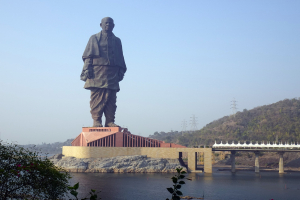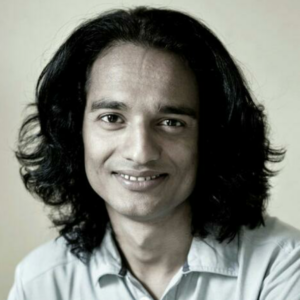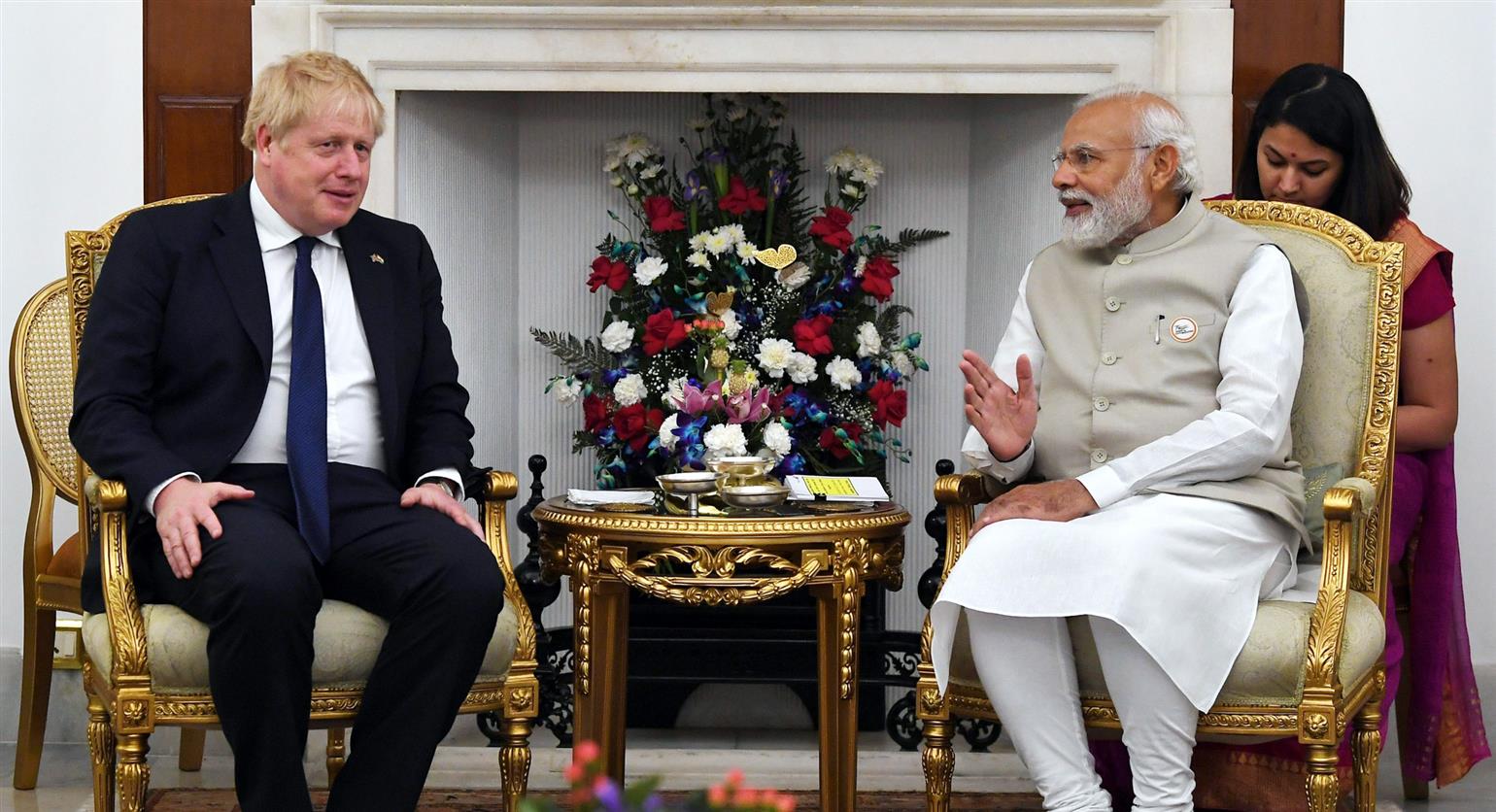
 By Kaushal Kishore*
By Kaushal Kishore*
 The British Prime Minister Boris Johnson started his visit to India from Gujarat to make it a kind of pilgrimage. His first formal stop was at Sabarmati Ashram, where he spent quite some time in memory of Mahatma Gandhi. Meanwhile, he learnt how Bapu used to spin on that tool. On the reception of Gujarat, he said he felt like Amitabh Bachchan and Sachin Tendulkar together. Leaving Gandhi Ashram, he accepted the hospitality of business tycoon Gautam Adani. In this age of Buldozer Baba and Buldozer Mama in Uttar Pradesh and Madhya Pradesh, he went on to pose like Bachchan at the JCB plant in Halol to feed the political theatre in Britain and India together. After leaving for Europe, he looks behind at India with sweet hopes.
The British Prime Minister Boris Johnson started his visit to India from Gujarat to make it a kind of pilgrimage. His first formal stop was at Sabarmati Ashram, where he spent quite some time in memory of Mahatma Gandhi. Meanwhile, he learnt how Bapu used to spin on that tool. On the reception of Gujarat, he said he felt like Amitabh Bachchan and Sachin Tendulkar together. Leaving Gandhi Ashram, he accepted the hospitality of business tycoon Gautam Adani. In this age of Buldozer Baba and Buldozer Mama in Uttar Pradesh and Madhya Pradesh, he went on to pose like Bachchan at the JCB plant in Halol to feed the political theatre in Britain and India together. After leaving for Europe, he looks behind at India with sweet hopes.
Foreign dignitaries landing in Gujarat is the trend in new India. It started in 2014 when the Chinese President Xi Jinping landed there to celebrate the birthday of Prime Minister Narendra Modi. Thereafter, the Prime Minister of Japan, Shinzo Abe, the Israeli leader Benjamin Netanyahu, and Canadian Prime Minister Justin Trudeau also landed there. Right before the pandemic, US President Donald Trump visited India from there itself.
Narendra Modi while being the Chief Minister of the state visualised a dream of fast economic growth with the Vibrant Gujarat Summit that focused on the improvement of the trade relationship with corporations from across the world. These are something that suggests the government help Sabarmati Ashram with the 1200 crores of rupees for its development.
Modi led state government invested 2700 crores of rupees to build the world’s tallest statue in Kevadia. This has fascinated Uttar Pradesh and Bihar to such an extent that they are ready to create similar towering statues in different places. Statue of Unity, the 182 meters tall Sardar Vallabh Bhai Patel at Kevadia, is no longer sure to be at the top of the list. Yogi Aditya Nath has planned to create the 221-meter statue of Lord Rama at Ayodhya where the construction of the Ayodhya temple is at its peak. Vrindavan has had a 43-meter high statue of Vaishno Devi for a long time. A 32 meter Hanuman statue at Shahjahan Pur and a 27-meter Buddha statue at Sarnath near Banaras are other notable statues. Two decades ago, the Taliban bombarded the Buddha statue at Bamiyan which rendered the opportunity to create the tallest statue of Maitreya Buddha. The respective governments of the Bahujan Samaj Party and the Samajwadi Party in UP focused on it and acquired hundreds of acres of land from the farmers for the Maitreya Project Trust. After such a long time, when nothing happened, the Yogi government embarked on it. One day, one of the tallest statues in the world will be in Ayodhya, and India will be the home to the top three statues across the globe.
Bihar too is not ready to lag behind anyone on this issue, as they have built the tallest statue of Gandhi in Patna in 2013 itself. The 22 meters high statue was installed by the government led by Nitish Kumar. After the 25-meter high Buddha statue in Bodh Gaya, the 100 feet tall and 30 feet high statue is also being built. The 21-meter high statue of Buddha built at Rajgir is one of the major tourist attractions. The aims and objects of Shri Bhagwati Sita Teerth Kshetra Samiti are to install a 251-meter high idol of the goddess along with several others. President of the committee and Janata Dal (United) Lok Sabha member from Sitamarhi, Sunil Kumar Pintu, along with the convener of Ramayana Research Council and Mahamandaleshwar of the Juna Akhada, Virendrananda, embarked on land acquisition around Sita Kund. If it doesn’t fail like the Maitreya Project Trust, one day the record of the tallest statue is destined for Sitamarhi.
Sharad Pawar, who had left the Congress on the question of a foreign-born Prime Minister, has recently criticised the new trend of foreign dignitaries visiting Gujarat first. In the last 8 years, a vast empire of business has been created due to the landing of the heads of 16 countries in Gujarat.

Apart from the JCB plant at Halol, Johnson has visited the Gujarat Biotechnology University at Gandhinagar to ensure earnings for the University of Edinburgh. He assured help from Britain in areas like defence and energy. New strategic technology and the factories to manufacture arms were yet another business idea on the table.
Gujarat and Maharashtra came into existence in 1960 after the bifurcation of the erstwhile state of Bombay. The two are the top economic destinations. As such it’s quite possible that the leaders from these states will resolve it soon. But in Bihar and Uttar Pradesh, the towering statues is another name to measure the height of development. No one seems to be there to focus on the village that Gandhi referred to in the Hind Swaraj in this blind race for development. But the town of Jasidih, near Deoghar, has still preserved the record describing the combined efforts of Gujarat and Bihar since 1958 when the two members of the Constituent Assembly from these two states i.e. Balvantrai Mehta and Pandit Binodanand Jha had focused on the Gandhian thoughts on Swadeshi and Swaraj.
*Kaushal Kishore is the author of The Holy Ganga (Rupa, 2008) and Managing Editor of Panchayat Sandesh, a monthly organ of All India Panchayat Parishad. The views expressed as personal.





